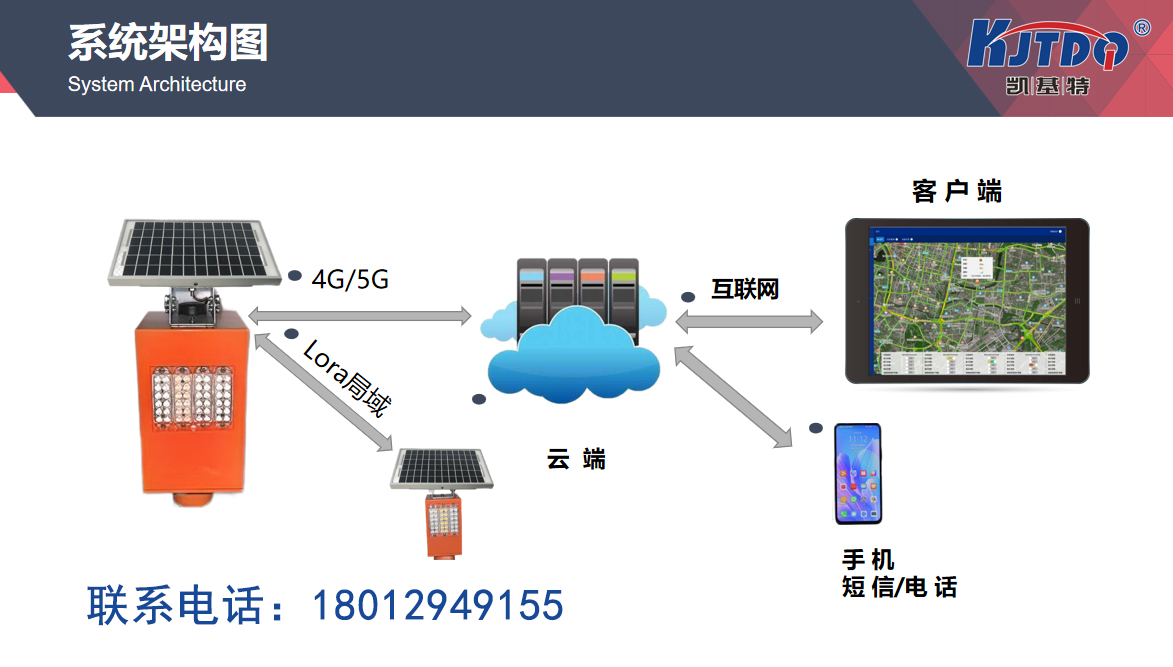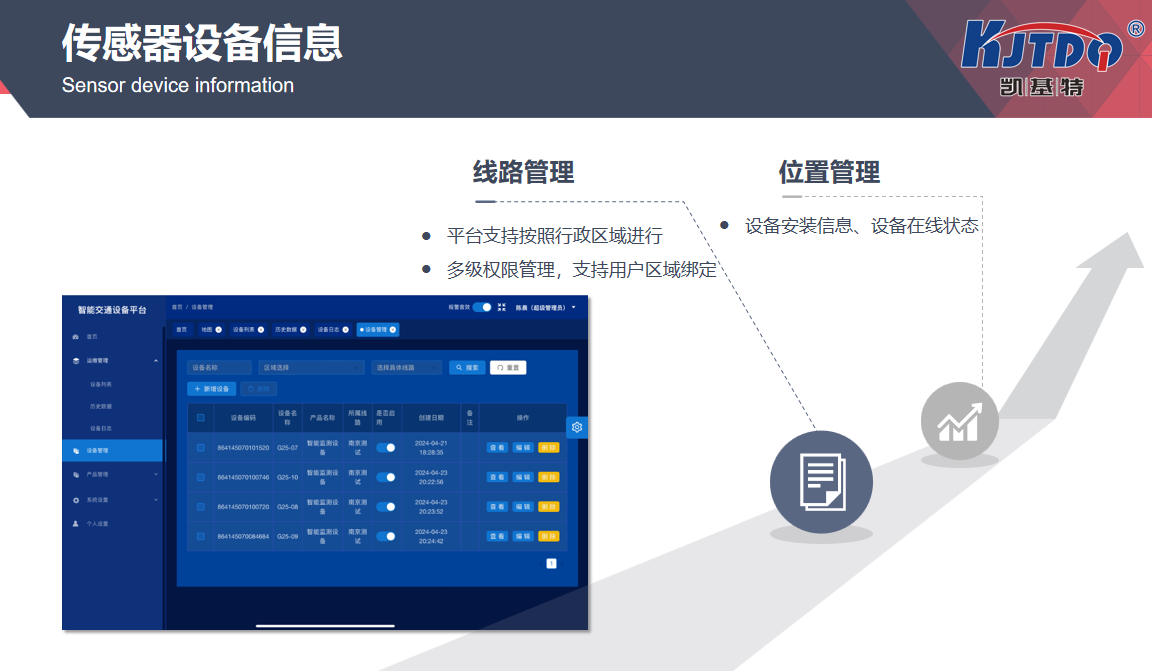In modern society, ensuring road safety is the shared responsibility of every member of society, and landslides, as a common geological hazard, are becoming one of the main hidden dangers threatening road safety. Especially in mountainous areas, hilly regions, and areas with frequent rainy seasons, the risk of road landslides is extremely high. Once a landslide occurs, it can not only cause serious traffic accidents, but also lead to casualties and huge economic losses. Therefore, road safety landslide monitoring has become a crucial measure, which uses high-tech means to monitor and warn potential landslide risks in real time, providing strong guarantees for ensuring smooth and safe road traffic.

The importance of landslide monitoring needs no further elaboration. Every year, there are countless road accidents caused by landslides. The occurrence of these accidents not only damages road facilities and blocks traffic, but also poses a serious threat to the safety of road users' lives. Especially in mountainous areas, the geological structure along the road is complex, and natural factors such as rainfall can easily trigger landslides. At this point, road safety landslide monitoring becomes particularly important.
Modern landslide monitoring systems can continuously monitor the geological conditions around roads 24 hours a day through high-precision sensors and data analysis systems. When the sensor detects unstable factors of the slope, such as increased soil moisture, slope displacement and other abnormal data, the system will automatically issue a warning to remind relevant departments and vehicles to pay attention to potential landslide risks. This real-time monitoring and warning mechanism greatly improves the ability to respond to landslide accidents and reduces the losses caused by landslides.
So, how does the landslide monitoring system work? Its core lies in sensors and data analysis technology. Sensors are usually buried in the mountains or slopes on both sides of roads to monitor geological parameters such as soil moisture, surface temperature, and rock mass displacement. These sensors work continuously every day, collecting real-time data and transmitting it to the monitoring center.
The monitoring center will conduct real-time analysis on these data, and once any abnormal changes are detected, the system will immediately issue an alert. This kind of warning can be transmitted through various means, such as SMS, electronic road signs, broadcasting, etc., to ensure that information can be timely conveyed to every road user. At the same time, the monitoring system can also be combined with meteorological data to predict the possibility and scope of landslides through big data analysis, providing decision-making basis for road management departments.
In addition, landslide monitoring systems can also record and store historical data, which is of great significance for studying the causes, frequency, and future trends of landslides. By analyzing historical data, researchers can identify high-risk areas for landslides, providing scientific guidance for future road construction and landslide prevention.
In practical applications, landslide monitoring systems have been promoted in multiple countries and regions. In some landslide prone areas, the government and enterprises have invested a large amount of funds to establish a comprehensive landslide monitoring network. Through these monitoring systems, the local landslide accident rate has significantly decreased.
Taking the southwestern region of China as an example, it is mountainous and prone to frequent landslides. Under the promotion of the government, a large number of landslide monitoring stations have been built locally, which monitor the geological conditions along the road 24/7 through sensor networks. Through these measures, the number of road accidents caused by local landslides has significantly decreased, ensuring smooth and safe traffic.
Similarly, in some mountainous countries in Europe, landslide monitoring systems have become an important component of road construction and maintenance. By monitoring potential landslide areas, these countries can take preventive measures before landslides occur, such as strengthening drainage, reinforcing slopes, etc., to minimize the losses caused by landslides.
With the continuous advancement of technology, landslide monitoring technology is also constantly developing. In the future, landslide monitoring systems will become more intelligent and automated. By introducing artificial intelligence technology, monitoring systems will be able to learn autonomously, optimize monitoring and warning processes, and improve the accuracy and timeliness of warnings.
For example, future landslide monitoring systems may combine technologies such as drones and satellite remote sensing to achieve real-time monitoring of large areas. Drones can capture high-altitude images and collect data in areas that are difficult to reach, while satellite remote sensing technology can conduct macroscopic monitoring of large areas. The combination of these technologies will make landslide monitoring systems more comprehensive and efficient, providing stronger guarantees for road safety.
Meanwhile, with the application of big data and cloud computing technology, landslide monitoring systems will be able to process more data and conduct more complex analyses. In the future, landslide monitoring systems will not only provide real-time warnings, but also scientific decision support for landslide prevention, such as identifying high-risk areas and predicting landslide occurrence times. This will greatly enhance the scientific and practical nature of landslide monitoring.
Overall, the development of road safety landslide monitoring technology has provided us with an effective means of responding to natural disasters. It not only protects our road infrastructure, but also safeguards the life safety of every road user. The application of landslide monitoring system reflects the important role of technology in society, and also demonstrates the wisdom and courage of human beings in the face of natural disasters.
However, the application of landslide monitoring systems still requires joint efforts from all parties. The government needs to increase investment, enterprises need to actively participate, and the public also needs to raise safety awareness. Only with the joint efforts of the whole society can we better prevent landslide disasters and ensure road safety.

In the future, with the continuous development of landslide monitoring technology, I believe we will be able to more effectively prevent and respond to landslide disasters. Through the power of technology, we can achieve harmonious coexistence between humans and nature, creating a safer and more stable living environment for future generations.
1. Will landslide monitoring systems affect the surrounding environment?
Landslide monitoring systems typically have very little impact on the environment. Most of the sensors they use are buried on the ground or fixed on stable structures. These devices are small in size, low in energy consumption, and will not damage the natural ecology. Monitoring equipment is mainly used to collect data and monitor factors such as soil, moisture, and temperature, with almost no pollution or noise generated. In addition, the deployment process of the landslide monitoring system has undergone strict environmental assessment to ensure that it will not have a negative impact on the surrounding natural environment.
2. Is the installation and maintenance of landslide monitoring system complicated?
The installation and maintenance of landslide monitoring systems are relatively simple, but require a professional team to carry out. The installation process includes burying sensors, establishing data transmission networks, and configuring monitoring centers. In terms of maintenance, monitoring equipment usually has a long service life, and regular inspection and calibration can ensure the normal operation of the system. Modern landslide monitoring systems typically have automated and remote monitoring capabilities, reducing maintenance frequency and costs. At the same time, the system will automatically remind the parts that need maintenance, making maintenance more efficient.
3. How does the landslide monitoring system respond to extreme weather conditions?
The design of the landslide monitoring system considers stability and reliability under extreme weather conditions. The sensor usually has the functions of waterproof, dustproof and lightning protection, and can work normally under severe conditions such as rainstorm, snowstorm and extreme temperature. In addition, the power supply of the system usually relies on multiple energy sources, including solar energy, batteries, etc., to ensure continuous operation in the event of power outages. The monitoring center also has redundant design to ensure that data transmission and warning functions are not affected in adverse weather conditions.